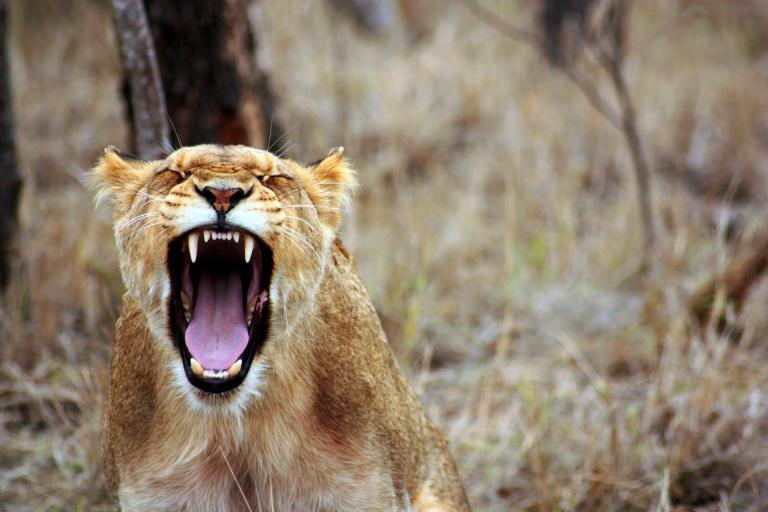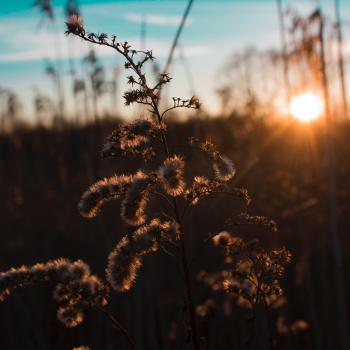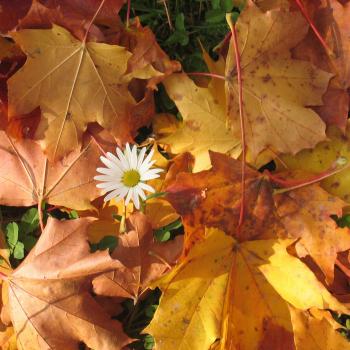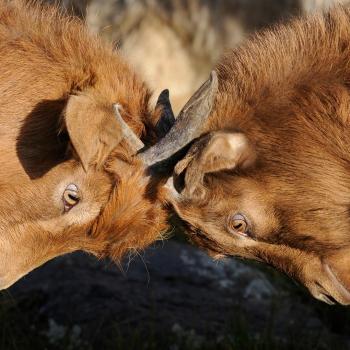 We are not fully domesticated, not fully civilized. Within us lives an ancient heartbeat that does not respond to logic, reason or the concerns of our modern lifestyle. Most of us try to suppress that Wild self: to bury the instincts and urges that occasionally surface, usually at an inconvenient time. We attempt to reason with our Wild, to convince it to settle down and go back to sleep. We make excuses for what we feel and try to find some sort of logical explanation for the sudden desire to pull off our shoes and feel the earth under our feet, to howl at the moon, to growl or snarl in the face of frustration. We teeter on the knife’s edge of giving in to that primal force stirring in us. Most of us resist, and the pattern of resistance grows. The urges become easier to brush off, to ignore. We think of that constant level of suppression as some form of maturity. As being an adult.
We are not fully domesticated, not fully civilized. Within us lives an ancient heartbeat that does not respond to logic, reason or the concerns of our modern lifestyle. Most of us try to suppress that Wild self: to bury the instincts and urges that occasionally surface, usually at an inconvenient time. We attempt to reason with our Wild, to convince it to settle down and go back to sleep. We make excuses for what we feel and try to find some sort of logical explanation for the sudden desire to pull off our shoes and feel the earth under our feet, to howl at the moon, to growl or snarl in the face of frustration. We teeter on the knife’s edge of giving in to that primal force stirring in us. Most of us resist, and the pattern of resistance grows. The urges become easier to brush off, to ignore. We think of that constant level of suppression as some form of maturity. As being an adult.
We’re wrong about that, though.
We Need Our Wild
You see, we need our Wild. That ancestral echo within us is not just a random collection of desires and sensations. It is a wisdom carried within our very blood, hiding in the spaces within us that have not changed in millennia. Our Wild is a language, a way of interacting with the world that is deeply meaningful. It is a channel of communication, carrying knowledge that our rational, logical, modern minds are simply unable to decipher. Cultivating that channel, allowing the Wild One within to awaken and dance in our blood, empowers us within the world. It offers us non-rational ways of knowing vital information. It gives us strength to resist paths and relationships that are not healthy for us. It connects us to the natural world around us, allowing us to live with the cycles of nature as opposed to struggling against them. It deepens our authenticity, our ability to express our true selves and choose correctly for our nature. When we live in that truth, our lives are satisfying and fulfilling. Most of all, the Wild within is our connection to our own spirituality, to the deepest part of us that is so often aching and empty in the maze of concrete and artificial light we live in. We are complex beings, and we built complex structures to match our growth as a species. But we lost track of something crucial – our own luxuriant, free, feral vitality.
As a nonverbal, nonlinear part of our psyche, the Wild One uses pathways of expression that are not linguistic. You will not hear the voice of the Wild One in your ear. However, the Wild One does communicate regularly, an active participant in the process of living. The Wild One speaks through your body, your gut reactions and your emotions. It is fully authentic: the Wild One knows exactly who it is and what it desires at this present moment. The rise of the hair on the back of your neck, a sudden chill or flush, your heartbeat accelerating, a sinking feeling in the pit of your stomach…all of these are communications from the Wild One. There is an almost constant stream of information coming from your physical body, but our tendency to ignore and suppress physical discomfort means we often miss the message. Stress-induced headaches and other physical maladies are so common that there’s an entire class of medicine dedicated to stress management. Unfortunately, what most of those treatments offer is simply another way to suppress the Wild One – a painkiller, nerve block or mood stabilizer. In some cases those treatments are correct – chemical and hormonal imbalances cannot be treated with lifestyle adjustment — but frequently the modern answer ignores the root cause of the physical discomfort: the Wild One is sending a distress call.
So how do we tune in? How do we learn to communicate with that which has no spoken language?
It starts with attention. Many of us are detached from our bodies to an alarming extent. Reconnecting to our Wild self means reopening the lines of communication between our minds and our bodies. Set aside at least half an hour when you will be undisturbed for the following exercise.
Connecting to the Wild Self
Supplies:
A drum, rattle or shaker of some sort
A cup of water
A few different food options. Try to choose snack foods that could be found through foraging. Nuts, berries and other fruit are good options. Bonus points if they grow locally.
A few photos of people or situations you want to know your authentic feelings about (i.e. partners, friends, a photo of your workplace, a photo of your house). Place them face down on your working surface.
Journaling supplies
The Flow:
Pick up your rattle or drum and play. It doesn’t matter if rhythm is an area of strength for you – our Wild self responds to sounds, to the feeling of the grains in the shaker, or a hand hitting the head of the drum. Small children don’t worry about matching a beat when handed a drum – they just revel in the sensation. Try to find that same perspective. As you play, begin to let your consciousness to focus on the present moment. Start tuning into your body as you listen to the rhythm. Notice if it would feel good to rock back and forth, to hum or sing wordlessly. Begin to explore those sensations without judgment or reward – simply immerse yourself in what feels good and right in this moment.
You’ll notice the Wild self awakening as your attention becomes more and more inwardly focused. There’s almost a ‘click’ of perspective shifting when I move from linear thought to instinctual, nonverbal thought. When you find that you’re not using words anymore, when your internal narrative has ceased and you’re simply moving, rattling/drumming and existing without an agenda, you’ve connected.
Gently let the movements and music cease when it feels natural, but stay in that instinctual space. Notice the offerings to your Wild self in front of you. Stay tuned into your body, to this present moment. If you are thirsty, drink. If you are hungry, eat. Enjoy those sensations as well. Fully explore how your body and Wild self respond to nourishment.
When you feel your body’s physical needs have been met, listen a little deeper. Notice emotions that may have been background noise. See if there are any images or memories that surface when you begin to explore those emotions.
This may be enough for one day. But, if you would like to continue to explore that Wild self and its authentic needs, turn over the first photo on your working surface. Notice the emotions and physical sensations that immediately arise. Try to stay present to the experience – feel the responses rather than think about them. You can turn over as many photos as you would like to explore. One may be plenty, but perhaps you have room for more. It’s totally up to you.
You can tell when your Wild self is done with this exercise by noticing yourself fatiguing, or having problems staying present and engaged. When you have reached that point, flip any photos face up back down. Wrap your arms around yourself and soothe your body. Rock or move again if that would feel good. Eat or drink again if that would feel good.
When you are ready to return to linear thought, begin to count upwards to 20. Allow your mind to sharpen as the number rises. When you’ve reached 20, take a moment to roll your shoulders, rub your hands together and reintegrate. Then, record your experiences in your Journal.
Moving Forward
Cultivating your Wild connection involves listening and paying attention to the subtle signals from your Wild self. Repeat the exercise above on a regular basis, but also start noticing your Wild self’s responses. Pay more attention to your gut instinct – the sudden feeing of right or not-right is a direct communication from our primal self. Emotions often carry Wild messages as well. Sudden waves of elation or sorrow, spikes of anxiety or fear and deep feelings of satisfaction or peace can all be messages from the Wild One. Emotional messages can be triggered by stimuli we consider irrational. The modern mind is not ready to accept a deep emotional response to a television commercial, offhand comment or the packaging on a product. But the Wild Self reads the deepest truth of any situation, and communicates on that same level. It responds to symbols, colors, sounds and textures. Although the context of a message may seem shallow, the wave of communication coming from the Wild One means that the subtext of the situation needs a deeper look. Wilding takes us to the center of ourselves as well as the center of the world around us, transforms our understanding, and leaves us more authentic, more connected, and more aware than we have ever been before.
May your path grow Wild.
—
Warm regards,
Irene Glasse
Mysticism, Musings and More:
Glasse Witch Cottage
Pagan Folk: A little bit Celtic, a little bit Tribal and a ton of fun:
Kindred Crow


















